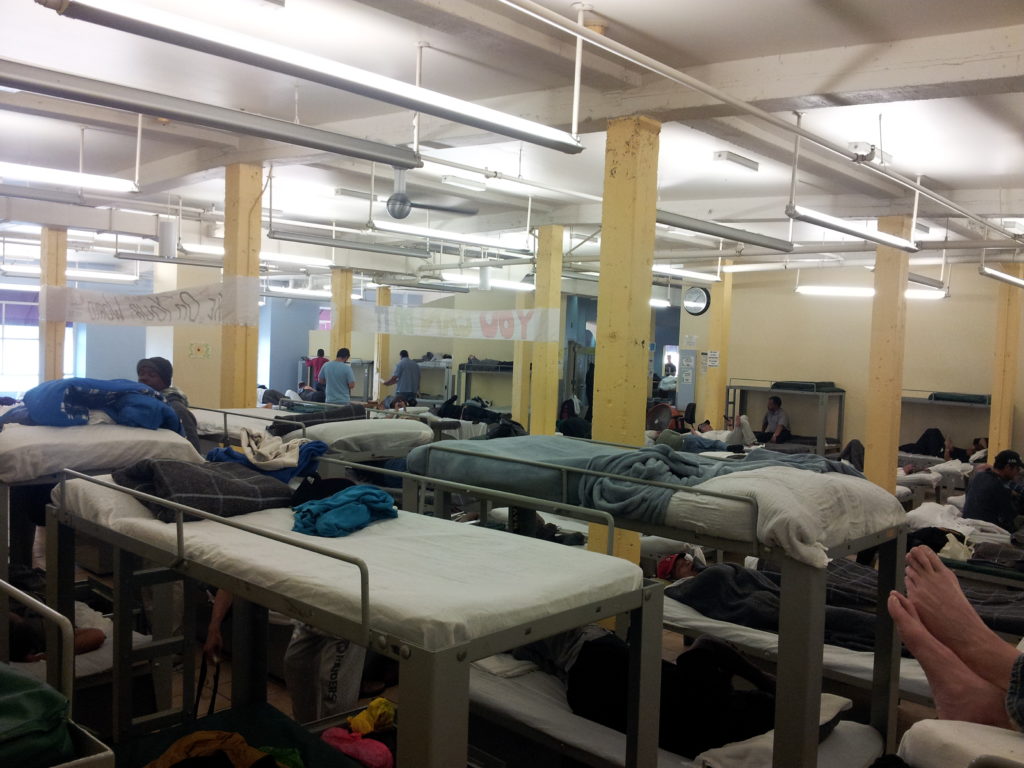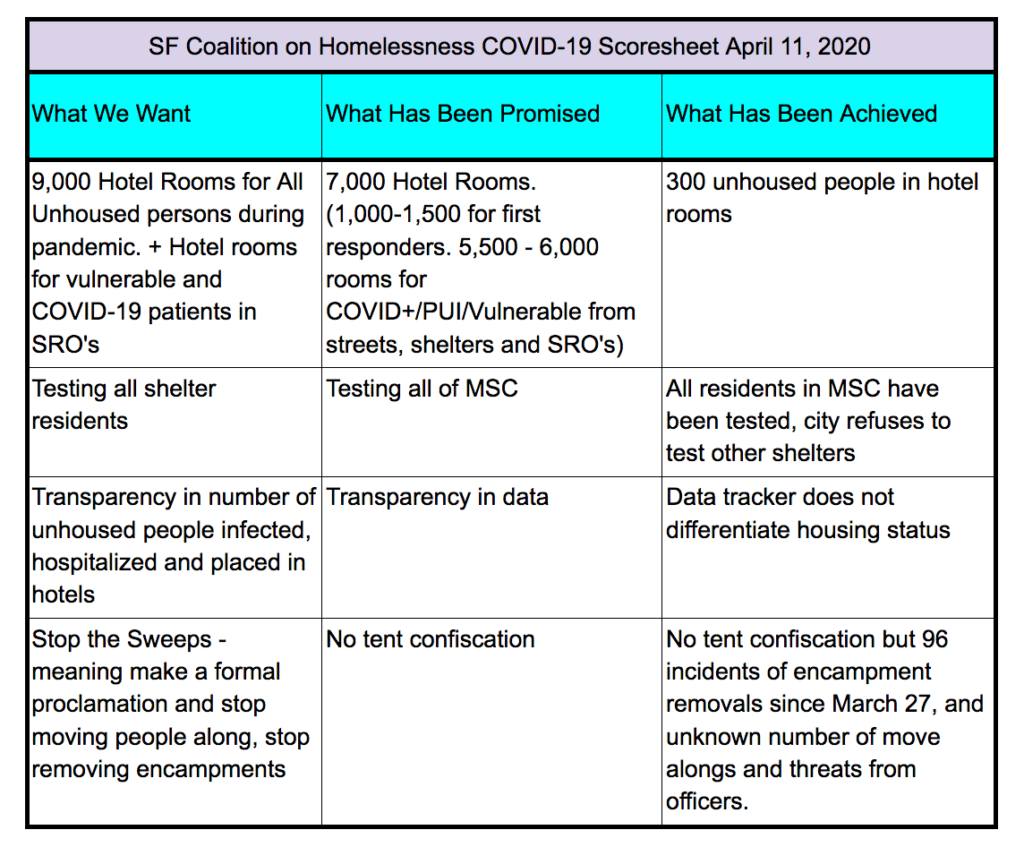Doctors, public health experts call for testing and housing all shelter residents in hotels
Yesterday, California experienced its most widespread outbreak of COVID-19 in any homeless shelter to date where nearly half of 144 shelter residents tested positive. For some perspective, the outbreak in this single shelter of 70 shelter guests comprises 8.5% of all positive cases in San Francisco, which total 857 as of Saturday.
When looking back on the lead-up to this catastrophe we see a series of policy missteps that got us here. This was entirely predictable and preventable. This was reiterated by doctors and service providers at a press conference Friday.

Academics, physicians, public health professors and advocates submitted advisory letters to the administration from March 18 onwards warning of the disaster that would occur in congregate shelters. They advised congregate shelters be relocated into vacant hotels. If this was not possible, it was advised that if someone tested positive in a shelter, everyone in the shelter should be immediately relocated into hotels and then tested.
None of this happened. Instead, the following unfolded:
A Tale of Missteps
(1) Just 14 days ago, 345 people were still staying at MSC South, San Francisco’s largest shelter, more than a week into the “shelter in place” order. By the time the first person tested positive last Saturday, April 4, the number of shelter guests was down to around 250.
(2) After the first person tested positive, rather than moving everyone into vacant hotel rooms, the city instead moved only about 100 “vulnerable individuals” or those who had contact with the two shelter guests who tested positive. They were originally planned to be moved into another more spacious congregate shelter (Moscone West Conference Center), but after the Street Sheet shared photos leaked from inside Moscone showing nearly 400 mats on a single conference room floor, the City quickly changed course and moved them into hotels.
(3) By Monday evening, it seems there were 144 people at MSC South. On Wednesday, 144 residents were tested, and those who showed symptoms and tested negative were tested again to lower false negatives. Of those 144 tests on Wednesday, only five people tested positive. Two days later, on Friday, all 144 were tested again. This time, 70 tested positive.
(4) After the outbreak had expanded, the city changed policy again. After saying for weeks that it would not quarantine those who had been infected in congregate shelters, the City did just that. It moved all those who tested negative into hotels. Those who tested positive remained, and MSC was redesignated from a homeless shelter to a medical care facility. What had been San Francisco’s largest homeless shelter on Monday will be by next week California’s largest auxiliary hospital. On Saturday, the city seemed to have changed their plans once again and started moving positive cases into a hotel and we are told that everyone from the shelter would be moved out by tonight.
This is a case of serious government malfeasance. We will look back in shame on the politics behind this humanitarian disaster that could have been so easily preventable.
What Now?
Test All Shelter Residents
The City has only agreed to test all the residents at MSC South. They have not even agreed to test one more shelter to see if infection is just as widespread. The City can get free testing from UCSF for shelter residents. Tests are now widely available being shipped to other counties, and those other counties are testing proactively. They need to move forward and test to determine if these rates are similar in other shelters. About half of those tested at MSC South came out positive. We don’t know what level of infection is taking place in other shelters. We have to know this, as this dictates decisions moving forward.
Move Shelter Operations Into Hotels
Part of the slowdown of moving shelter residents into hotels is that the shelters have to operate one space while trying to manage with the City triaging who to move into hotels. Moving the entire shelter into a hotel can happen quickly — Los Angeles is moving a thousand people a day – San Francisco should at least get this done by Tuesday night. If they move the entire shelter, – they don’t need to worry about staffing, structure, rules, food or anything else. They simply duplicate the shelter in a new space — this one with private sleeping and baths.


